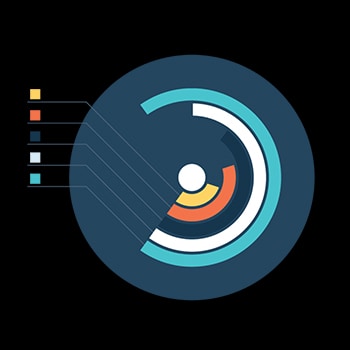The Importance of SC&E Readiness for the Public Sector has been saved

Perspectives
The Importance of SC&E Readiness for the Public Sector
Leveraging digital platforms for sustainability reporting
With a growing emphasis in our society on sustainability, climate & equity (SC&E) issues, many organizations are beginning to transform the way they capture, manage, and report SC&E-related data and are considering how to prepare for meeting expectations for disclosure, regulation, and action.
As governmental entities identify SC&E issues that are material to their constituencies and stakeholders, the public sector has an opportunity to drive strategies that manage SC&E performance and utilize new technologies to organize data and better prepare for future regulations and reporting requirements—all while setting up the organization to meet the growing demands for SC&E transparency.
Public sector agencies, states, and municipalities should not wait to prioritize their SC&E strategy. While the topics under the umbrella of SC&E may seem too broad to tackle or like an idea that only exists somewhere out there in the ether, its relevancy is growing—and growing more by the day. But aside from its increasing relevance, there are multiple reasons why now is the right time to begin the SC&E transformation journey.

Societal
First, SC&E is socially the right thing to do. Marketplace expectations are evolving to desire not only transparency but also actions to promote sustainable business practices. Positive actions in the public sector also align with the Justice40 mission— the Federal Government’s goal that 40 percent of the overall benefits of certain Federal investments flow to disadvantaged communities that are marginalized, underserved, and overburdened by pollution. For the public sector, a focus on SC&E is mission imperative.

Transparency
Second, in addition to the socially conscious aspect of an SC&E ready organization, SC&E reporting and data transparency may lead to better business decisions. For example, understanding energy usage may lead to reducing energy spend.

Readiness
Finally, and perhaps most importantly, it is a good idea to think about SC&E reporting now to better assess if your organization is ready to report before regulators require reporting. Do you have a strategic roadmap? Is your data readily available and organized? It is a better business strategy to confirm the organization is prepared now for current and future regulations and requirements.
SC&E for public sector entities
For public sector organizations, the SC&E journey has its own complexities and hurdles due to factors such as the size of many organizations, additional regulations and complexities, and difficulty with the speed of transformation initiatives. While many private sector organizations have started to prepare and gather experience within the SC&E space, some public agencies are still working to gain momentum. The public sector can use lessons learned from what stakeholders are asking the private sector to determine items like:
- Who owns sustainability reporting?
- How can technology be leveraged to gather data more efficiently without sacrificing governance, controls, and oversight?
- With the abundance of data conversion and manipulation, how can strong preventative and detective controls be designed and implemented?
To understand what government organizations should be considering or how they can begin the SC&E preparedness journey, let’s look at some of the current regulations and their impact on the public sector now and long term.
Future of Work: Ways of working in uncertain times

Justice40
The Justice40 Equity Reporting requirements is the Federal Government’s goal that 40 percent of the overall benefits of certain Federal investments flow to systemically disadvantaged communities that are marginalized, underserved, and overburdened by pollution.

Annual climate adaptation sustainability plans
This includes Federal Progress, Plans, and Performance and the Office of the Federal Chief Sustainability Officer and encompasses the executive order on catalyzing American clean energy industries and jobs through the Federal sustainability plan.

The Sustainability Tracking, Assessment & Rating System
(STARS) is a transparent, self-reporting framework for colleges and universities to measure their sustainability performance.
What can public sector entities do to prepare?
Understanding the importance of SC&E and the broad impacts, requirements, and regulations it will have on the public sector may seem like it paints the picture of an all-too-complex undertaking. How do organizations even begin to tackle this? However, it doesn’t have to be complicated. There are some practical steps the public sector can take to help set up for success even as the SC&E landscape continues to evolve and expand.
Determine how readily available current data is and how it is currently organized to meet current and future reporting requirements. Examples of considerations include questions such as what reporting frameworks and standards could be leveraged? Are there gaps in the way the agency manages data? What automation tools may help fill in the gaps within the current process?
Determine if there is a transformation framework that can be adopted to fit into the organization’s unique reporting needs, applicable standards, and related internal processes. Agencies might look to other functions within the business such as finance and accounting or audit and risk to identify similar transformation frameworks and platforms that could help. Workiva is an example of an end-to-end platform that integrates financial and non-financial data from source to report using extract, transform, and load and linking capabilities to build internal and external SC&E reports that are connected and enabled with Governance, Risk, and Compliance functionality to help control the process and manage governance and risk. Deloitte has built multiple accelerators for use on the Workiva platform focused on SC&E and financial reporting and compliance. These Deloitte-built accelerators on the Workiva platform aim to help organizations modernize internal processes for collecting disparate SC&E data, as well as streamline and automate SC&E reporting capabilities inclusive of data collection processes and greater framework alignment. These accelerators are available now in The Workiva Marketplace.
Recommendations
Sustainability
Learn more about how Deloitte’s Sustainability offerings architect paths to a greener and more prosperous future, where people and the planet prosper together.




